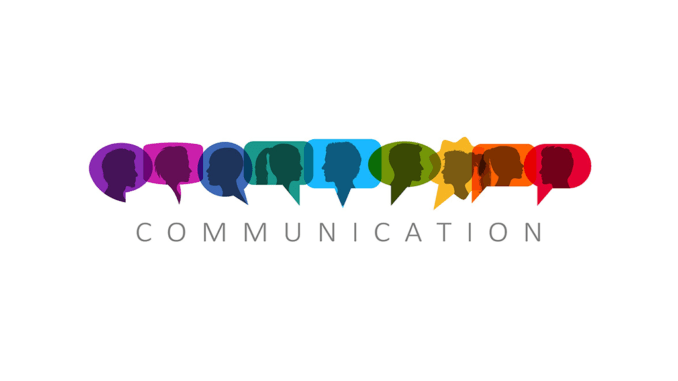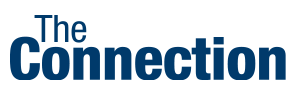
Management by Walking Around Gets a Makeover
My recent change consulting work has taken me to the mergers and acquisitions world. Now I don’t know about you, but I can’t imagine a greater transformational change for team leaders than getting acquired by an industry giant. Not only is there culture and strategy change, but also a myriad of systems, tools and processes that either need to be learned or integrated. What’s interesting though is that the results from just about every feedback survey I’ve seen so far consistently indicates three challenges namely, ‘getting stuff done, dealing with strategy misalignment and cultivating the right levels of collaboration and teamwork. In my view this is corporate-speak for “I and my team are just not feeling like we belong.”
The pat answer of course, is more communications, which is exactly what is happening. However as my colleague Jeannine Vaughan, an expert in transformational executive communications, noted in her recent LinkedIn article Leaders Think They’re Communicating, Employees Disagree, “Ironically, leaders are sending more communications than ever to employees, inundating their inboxes. But, they’re not prioritizing or contextualizing what they’re saying”, nor are they purposefully, “creating cultures of belonging.”
What does a ‘Culture of Belonging’ look like in this new hybrid world?
For me, the answer for cultivating belonging was called ‘Management by Walking Around’ as described in my book Tandem Computers Unplugged – A People’s History. As then Tandem CEO, Jimmy Treybig would often say, “structured and unstructured communications are the glue that holds an organization together and fosters positive employee action.” The Tandem Philosophy was specific on this point. “Our employees and management SHARE responsibility for a flexible, structured environment that facilitates the free flow of information about Tandem’s business strategy and employee concerns and suggestions, but also promotes creativity and teamwork through increased interaction between individuals and groups.”
However, this new world of hybrid work doesn’t easily lend itself to physically walking around at all. So what is a leader to do?
- First, we need to acknowledge that the days of depending on cascading communications are over. They take too long to filter through the organization, are often subject to wild reinterpretations, and don’t work at all for facilitating cross-organizational communications.
- Second, we need to unleash what is being called circular communications strategies that encourage two-way dialogue and feedback loops.
As Jeannine Vaughan, went on to say, “Leaders must forego finely crafted and vetted messages, and instead opt for a short series of communications that inspire conversations, just like they did during the pandemic.”
How does a leader communicate in a circular fashion i.e. manage by walking VIRTUALLY around?

- First up has to be an assessment of one’s in-the-office on-screen presence with a critical eye to what is being communicated non-verbally.
Eighteen months ago I speculated that the ‘look and feel’ of a leader’s home office background was soon going to become a critical part of a leader’s brand. Not only has that happened, but also now the shift back to plain white office walls in office conference rooms is quite jarring. Emotionally it transports us back to a time when leaders were the ‘other’ and invitations to “Ask Me Anything” were met most of the time with ‘deafening silence. Professionally rendered online backgrounds, tailored for different audiences such as employees, customers, and investors, enable the leader to take the visual comfort of their home office, to the office and banish conference room white walls forever. Full disclosure my son Kris’ firm Bifrost Lighting can for a modest fee and a picture of your home office, render a life-like background version for in-office use on Zoom or WebEx. I myself am experimenting with Fluora, a programmable LED houseplant from Color & Light, a San Francisco lighting design firm. On the fly, I can change the mood of online meetings in a non-verbal way in real-time. Reach out if you’d like to learn more about either of these new approaches.

- The second is to acknowledge that as team leaders, we must be the ones to initiate both structured & Adhoc circular communications in as many ways, means, and vehicles as possible.
Proficiency in circular communications is the way of the future and requires a completely different and personal communications strategy. As noted in a recent edition of BLAST, a newsletter obsessed with helping leaders spark cultural and organizational transformation, “leaders, especially middle managers must think of communication ‘as a series of communication and feedback loops between them and EACH level of the organization.” In other words, it’s not ‘ONE and DONE’ as cascading communications typically are. The resulting bi-directional conversations need to involve small bites of information with full transparency. Leaders must be willing to surface and talk about blind spots and the dangers of group thinking. Here’s a collection of transformative examples that I’ve seen work.
- An SVP posts weekly a selfie sound bite-long video from his garden. In it, he shares 2-3 ‘top of mind’ musings of what he was working on and/or issues that are keeping him up at night. Team members are free to post comments and share as they wish.
- Another runs a bi-weekly podcast where he invited various colleagues and team leaders from deep in the organization to informally chat on topics of strategic interest. Each posted episode has a place for listeners to provide feedback or make comments and a mechanism for the leader to individually reply and encourage more conversation.
- A third transparently publishes for their entire organization a set of aligned OKR’s (Objectives & Key Results) for all to view and comment on.
- Microsoft’s CEO, Satya Nadella’s favourite is to watch All Hands Chat comments and post-event will schedule 15-minute outreach calls with folks who posted ideas or made comments that intrigued him.
- A leader in engineering sponsors one catered lunch every week with a different ethnic cuisine as a way to draw people to the office and mix with others. This not only introduces people to other cultures but also encourages interactions with other teams
- Another leader organizes bi-weekly ‘Share the Pie’ events where team members take turns bringing their favorite kinds of pie that are shared over coffee along with informal problem solving and ideation chats.
Two other techniques that I am really drawn to are the playing of Keep Wondering Out Loud (KeepWOL), a Trivial Pursuit-like talent development game that I’ve talked about in a previous article. It’s especially useful as a means to foster inclusion within remote, hybrid, and in-person teams, especially cross-functional teams. Another is to design an online ‘Memorial to Fallen Ideas,’ where great ideas that, for whatever reason, weren’t implementable, or experiments that didn’t yield the results expected, can be acknowledged, celebrated, and valued as important contributors to ongoing team learnings.
Of course, not-withstanding is the proactive use of collaboration platforms such as Slack, Microsoft, or WebEx teams to act as the defacto virtual water cooler to test messaging, collect opinions, get help, share lessons learned, and encourage conversations. Also is acknowledging the critical role that meeting organizers now must play in reimaging meeting execution so that they also become sources for conversation, not one-way information or status dissemination that can be communicated by some other means.

- Lastly, In-Office days must be proactively organized and orchestrated as team building special occasions, just as if they were a team offsite.
As has been stated many times, there’s no going back to the old hierarchical, and controlling way of working. Nothing is more deflating than commuting for an hour or more to get to the office and finding oneself stuck in a private cubby hole or conference room on WebEx or zoom calls all day. Coming to the office must involve organized collaboration. This means icebreakers, formal Team Brown Bags over coffee, catered food, and especially catered drink events to break down the barriers between people and cultures. I know that discussions of intoxicants in the workplace is a taboo subject, but Tandem’s Beer Busts were a success because as Edward Slingerland wrote in his new book, DRUNK – How we Sipped, Danced and Stumbled Our Way to Civilization,– their ability to bring people together in ways that enhance creativity, alleviates stress, builds trust and gets fiercely tribal folks to cooperate. Booze likely did come before bread! Tandem’s Beer Busts, held around the world every Friday afternoon, for a set amount of time, allowed employees to mix and know each other just as people not as positions or titles. These were experiences that I will never forget with collaboration stories that have lasted a lifetime.
A Jeannine Vaughan worries, “Companies that fail to implement effective communications strategies for hybrid work will experience a decrease in collaboration and an increase in employee disengagement. The net effect will be greater attrition rates and less innovation.”

There is no question in my mind that by consciously developing communication strategies that create cultures of belonging, demonstrate transparency and show vulnerabilities, leaders can ensure that all of the goodwill and trust cultivated during the last two years won’t drift away. It’s still Management by Walking Around, but reimagined in a new and different more virtual way!
Note: The Image above is Jimmy T demonstrating his skill at writing with his toes at a 1987 Beer Bust.- can’t beat that at showing vulnerability)
[adning id=”8299″]


Be the first to comment